Leighton House Museum
Frederic Leighton Artist
Leighton House was the home of the famous nineteenth century painter and sculptor Frederic Leighton, who later went on to be the only artist to be granted the honour of becoming a lord, making him Lord Leighton, Baron of Stretton.
This is house museum is real treat for any visitor and i myself was totally taken aback from my visit. It is so totally removed from any London house you may expect to find and the fact that it remains open to the public over a hundred years after the death of Lord Leighton is a testament to just how much we British love our quirky artists.
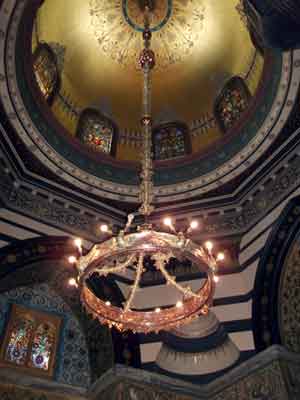
Opening Times
12 Holland Park Road
London
W14 8LZ
Open:
Mon - Sun 10am to 5.30pm,
closed Tuesdays
Free guided tour every Wednesday at 3pm
Admission Costs:
£7 adult ( £5 Conc.)
|
|
|
The house really is something to behold and the interior is quite unexpected from the red brick exterior in the quiet back streets of Kensington. It is difficult to explain the opulence and grandeur that the interior portrays as you enter the main hallway, it quite simply takes your breath away.
The house was built from 1864 and was continually added to throughout Leighton's lifetime until his death in 1896. Perhaps one of the most stunning additional rooms is the Arab hall which was completed in 1877 and which is covered with ceramic tiles from Damascus and Syria.
Leighton House
I will give you a brief layout of Leighton house and highlight a few things to look out for in each space. You really do have to visit for yourself to see all the wonders of this house. Each room contains a free guide to help you discover the items within it, it will also indicate which are original pieces and which have been restored or replaced.
The ground floor consists of six separate rooms/ spaces:
The Staircase Hall - A stuffed peacock is placed at the base of the staircase which symbolizes the Victorian art Aesthetic Movement which Leighton's work was a part of. Above the door to the dining room is the German word 'Posit@ meaning 'to good health'. Leighton spent a lot of his young life in Germany and is where he first studied art.
The Narcissus Hall - A bronze statue of Narcissus stands in the centre of this hall and the whole space is designed around the story of Narcissus and his love for his own beauty. For instance stunning Blue tiles encrust the walls and which represent the water of the pool in which he admired his own reflection.
The Library - A large wooden desk dominates this small room on which letters are placed which show just how much work he was taking on after he was elected President of the royal Academy of Arts in 1878.
The Arab Hall - A breath taking room which is totally covered with ceramic tiles from the middle east. A relaxing pool is in the centre of the small hall. A room designed to impress visitors as well as to display Frederic Leighton's collection of Middle Eastern art.
The Drawing Room - A sumptuous room used as a waiting room for Leighton's guests. The room was designed around four large paintings entitled 'Times of the day' originally by French artist Jean-Baptiste-Camille Corot.
The Dining Room - A room decorated in the most luxurious red flock wallpaper and which has a typical Victorian feel. Many famous people of his time dined here including queen Victoria.
The second floor of Leighton house has three rooms:
The Silk Room - A very unusual room which is in two parts. the walls are covered in a lovely green silk covering. The room holds some of Leighton's picture collection. An unusual feature of the room is a Egyptian lattice work window which protrudes out
over the Arab hall below.
The Studio - This is the main room of the house and where Leighton spent most of his days. A large window floods the room with light and a striking screen at one end were used as a sort of scaffold for Leighton to reach the tops of his large paintings.
The Bedroom - A small room at the back of the house, sparsely furnished is the only bedroom in the house. This is the room where Frederick Leighton passed away in 1896 with his two sisters present.
My Review
From the moment I entered Leighton House I was continually surprised by every room I entered. It is quite simply a stunning house which I can only assume was designed to both impress Leighton's' illustrious visitors and to entertain Leighton himself.
Frederic Leighton lived alone apart from his servants and you can really see that this is a house made by one man for one man, it is truly unique.
It is not a large house and my visit took me about an hour. There were about 10 other visitors in the house at the same time and this meant that it was a very pleasant experience and made it easy to explore the house and see all of the intricate details in the artwork and decoration of the house.
Even though it is a very unusual house it still had a very warm and homely feel to it. You can feel Frederic Leighton in every room as it very much represents his personality and tastes in style.
I enjoyed my visit to Leighton House and I was very glad that I had taken the time to visit. It would not normally be on my list of to do, as I am not particularly a fan of the Victorian Aesthetic movement. However that aside the house is stunning and it really does give you a glimpse into the life of this extraordinary artist and sculptor as well as the tastes of the time.
What's On at Leighton House Museum
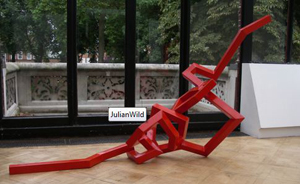
Wrestling Pythons - Friday 1 Feb - Sunday 3 March
This solo exhibition from Julian Wild will show works made during his three year Royal Borough of Kensington & Chelsea/Chelsea Arts Club Trust Studio Bursary. His sculptures will appear throughout the rooms and gardens of the museum and are fitting along side the decorative furnishings of the house.
Back to the top of this Leighton House Page
Home > Historic-Houses > Leighton House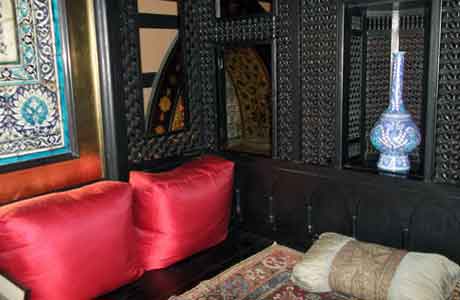
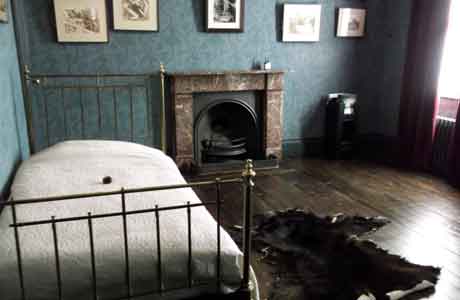
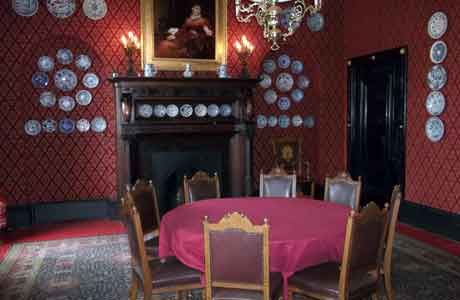
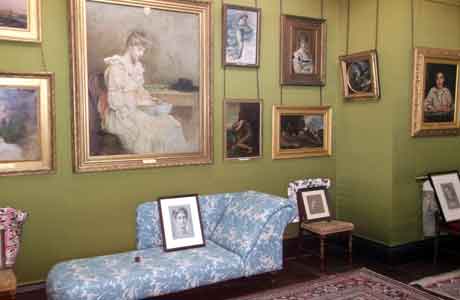

New! Comments
Have your say about what you just read! Leave me a comment in the box below.